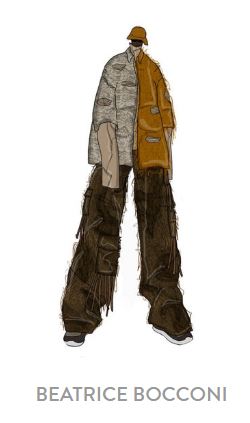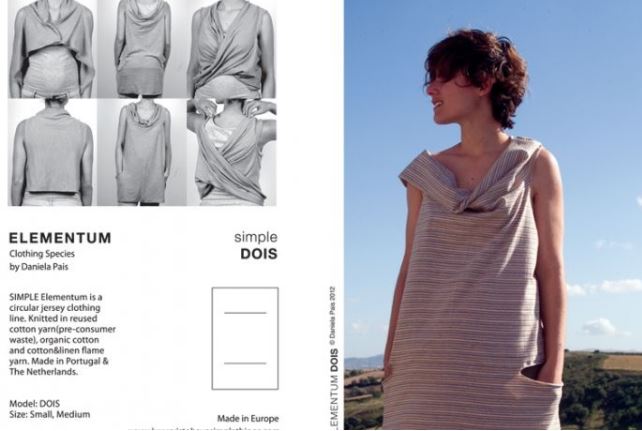CIRCULAR FASHION EXPLAINED
The basic concept to make Circular Fashion easy to understand is this…..
“Imagine a world where there are no
landfills or incinerators.
That is your starting point.”
(Lizzy Cross)
What no landfills and incinerators? Yes!
If this was the case all products created, whether it be a jacket or an oven would be have to be made in such a way that could be deconstructed and the parts could be re-utilized and re-purposed, into one of the same types of products, or into something completely different (better (upcycling) or on a less value scale (down-cycling)). Manufacturers and designers would need to start creating products with the end of life in mind.
So what is the actual definition of Circular Fashion?
Before we dive right into the definition of circular fashion, you must understand the definition of a circular economy. A circular economy is one in which waste and pollution are designed out, products and materials are kept in use for as long as possible, including through reusing and recycling, and where natural systems are regenerated. Thank you to the Ellen MacArthur Foundation for that amazing definition. Now, when you define circular fashion, all of those principles must apply, if possible. Therefore, circular fashion would be a movement where, when garments are made, waste and pollution are designed out of the equation when the initial design and production of these garments occurs. This means that for example you might use low impact fabrics (low environmental footprint) or zero waste patters (to reduce the amount of fabric that is wasted) to help design waste and pollution out. An example of keeping products in use for as long as possible, might be the utilization of a clothing take-back program. And finally when it comes to ensuring that natural systems are regenerated are having garments that are biodegradable, or utilizing compostable packaging for all of your designs. Those are just a few examples.
So basically the definition of circular fashion is the creation of garments without fu*king up the planet. It is really thinking about how clothing is designed and ensuring you think out of the box when it comes to engineering it’s end life and what new item it will become. It’s understanding that the old clothes, that once went to landfill, now become a RESOURCE.
“Old clothes need to be seen as a highly sought
after resource with value, not as a waste”
(Lizzy Cross)
Business Models for Circular Fashion
Some of the business models used in circular fashion include: re-use, repurpose, disassembly, recycle, upcycle, downcycle, longevity, durability, mono-fabric use, multifunctionality, take back programs, repair, memory clothes, re-sell and rental streams.
Even when you purchase something at a thrift store this is part of the re-use and re-sell model and therefore part of the circular fashion industry. When you bring something back to a store, via a Take-back program, like Patagonia has (their Worn Wear Program), this is a good example of keeping clothing in play. Patagonia takes old clothing back and creates it into other garments. This not only is great for the environment, however has also been beneficial for Patagonia’s bottom line in terms of tapping into different demographic markets that were not there for them, prior to this initiative. Upcycling involves using pre-existing clothing, accessories or other items and reconstructing them into new clothing. Think of old beautiful sweaters being unraveled and the yarn being made into new yarn to be made into another product like a skirt, or scraps of fabric waste from old furniture being used to make purses. These would be examples of circular fashion.
Here is a diagram that show the current linear economy we live in (on left) and the circular economy (on the right).

Designing for Circularity
When it comes to designing for circularity, some fashion designers are at the forefront of this. Through such programs as Redress Design Awards, new, blossoming fashion designers are given the chance to compete annually to create circular fashion designs. Redress offers the Circular Fashion Design Pathway Course, The Redress Design Award 2020 Circular Fashion Design Pathway Course aims to support emerging designers intending to enter the Redress Design Award 2020 competition cycle to deepen their knowledge in the subject area of design for circularity. Longevity and durability are two critical concepts that are key to circular fashion. Because without these, the garments will only have a short life span due to getting tears or buttons falling off or what have you. Recycled fabric can be used as well as waste fabric and deadstock. There are so many options that can be considered. Check out our Circular Fashion 101 – Guide for the basics of circular fashion to learn more.
Elementum, a circular brand out of Portugal is a great brand to follow. Utilizing zero waste patterns they create garments that are highly functional and reduce the creation of waste fabrics, thus reducing their carbon footprint.
What are the benefits of Circular Fashion?
The benefits to Circular Fashion are the reduction of raw materials, reduction of greenhouse gases, less water use, less water and soil contamination and pollution. Just think, if you are using less raw/virgin materials to make garments, and are using what already exists, this is a huge savings to our planet. Making fashion circular not only makes a huge environmental difference, but also helps employment growth and economic growth. The increase in revenues from new circular activities, by getting products/materials more functional and easily disassembled/reused has the power to increase GDP and therefore economic growth, according to a McKinsey and Company. Here is a link to a report written by McKinsey and Company that discusses the Circular Economy. It is truly insightful and a fascinating read.
“Today’s waste system is often linear—use an item, then dispose
of it in a landfill. A circular waste system creates
additional economic, environmental, and social
value through recycling or reuse. These practices
extend the useful life of a product and diminish the
use of resources. Eventually, there could be a new
generation of regenerative materials.” McKinsey and Company

What to consider when designing for circularity?
As a brand there is so much to consider when designing for circularity. First off, you need to evaluate what business models fit with your brand. Were you wanting to pursue the rental market model, the take-back model, the re-purposing model, the recycling model etc.? Some of the other items you may want to consider are:
- Using mono-materials and low impact fabrics
- Identifying the amount of components (buttons, zippers) on the garment
- Trying to minimize the use of components where possible can help during future disassembly.
- Consider who will be wearing your garment
- The future recycling of your garment T
- The potential deconstruction of the garment
- The re-use of the garment etc.
- One must consider about the transparency and traceability of the garment and how this will be communicated with your customers.

What should consumers know and what questions should they ask?
Being a consumer in the sustainable clothing market can be difficult to navigate these days. Some of the more basic questions you can ask, before you decide on supporting a brand are as follows:
- Look for brands that are sustainable and act socially responsible.
- Do the brands say where they manufacture their garments?
- Do they pay fair wages?
- Look for certifications on their website of their fabrics or as a company as a whole. Are they B Corp Certified company or are the fabrics they use certified in any way (GOTS, C2C)?
- Are recycled fabrics used?
- Do they use waste fabric or deadstock to make garments?
- Do they have a take-back program?
- Are there any policies on their website regarding such things as the environment, sustainability, animal welfare?
- Do they have a Supplier Code of Conduct on their website?
- Do they have a Sustainability Strategy and targets set?
- Do they use zero waste patterns?
- Are any of their offerings circular in any way?
I hope this blog post has helped you understand circular fashion a little better.
If you want more information on Circular Fashion, Moda Circolare has created a Circular Fashion 101 Guide. This guide provides the basics of Circular Fashion.
About the author:

Lizzy Cross is an expert in sustainable and circular fashion and is the founder of Moda Circolare, a sustainable fashion consulting agency. Moda Circolare, helps fashion and apparel brands embed sustainability into their current business strategies. Moda Circolare’s mandate is to help the fashion industry live in harmony with nature and they do this by working with brands to create robust Sustainable and Circular Business Strategies and Roadmaps for Success.
If you would like more information, please contact us below or email: modacirc@gmail.com
Error: Contact form not found.

